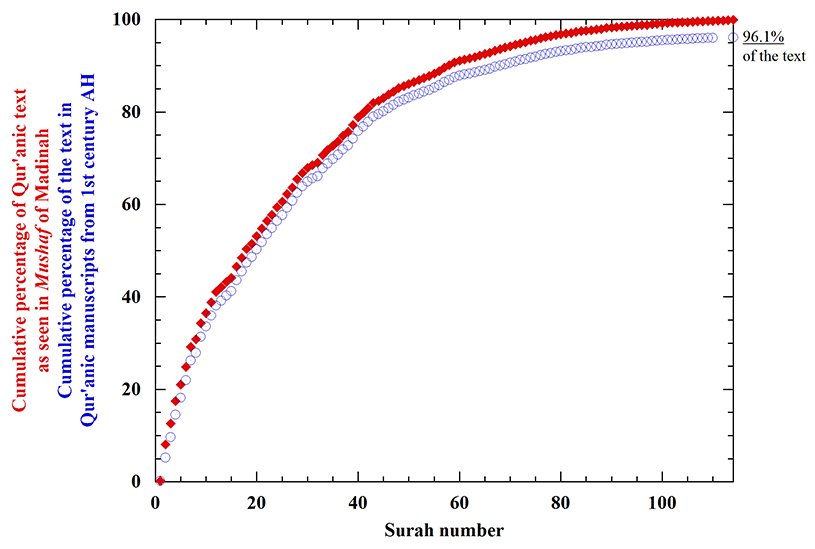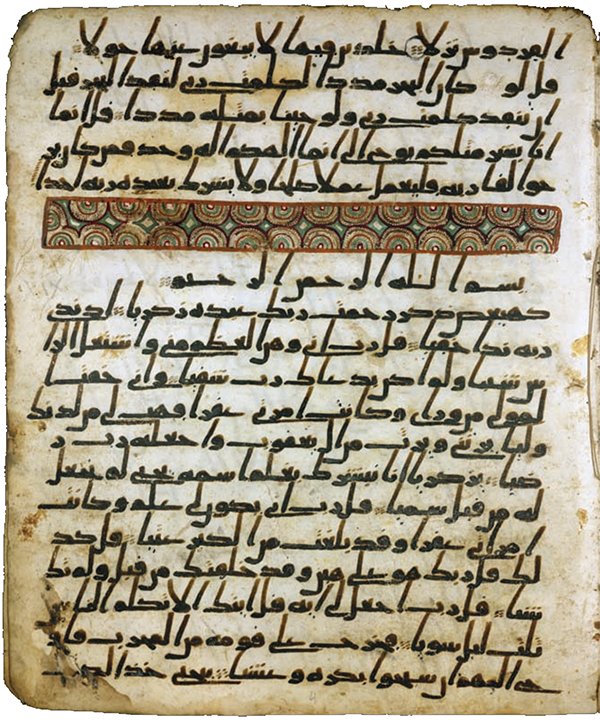Concise List of Arabic Manuscripts of the Qur’ān Attributable to the First Century Hijra.
UPDATE: We present a massive update of the article “Concise List Of Arabic Manuscripts Of The Qur’ān Attributable To The First Century Hijra”. This ninth interim update is the biggest update since the article was initially published on the 17th July 2009. bit.ly/2tKdjcM

The study of ancient manuscripts of the Qur’an is steadily gathering pace. In decades past, a few scholars have compiled lists of Qur’anic manuscripts attributable to the 1st century hijra. Although helpful, these lists contain only the barest details,…..
….. usually only the name of the manuscript concerned or sometimes even less. With this in mind, we have constructed the above article (bit.ly/2tKdjcM), that contains additional details providing further insights into these valuable manuscripts, …..
Should one ponder over this list, they will come to the appreciate that scholars involved in this field of study suffer from an embarrassment of riches. Quite simply, there is no other work from the Late Antiquity that comes close to the Qur’an in terms of….
…. the number of their earliest manuscripts including textual content. This ninth interim update is based on the latest research including the most recent round of radiocarbon dating, some manuscripts have been removed and several manuscripts have been added, …
…. primarily owing to the increased knowledge of the ḥijāzī manuscripts kept in Turkey. Numerous informative bibliographic references have been added and we would encourage the reader to go through the notes at the end for further information.
Given the nature of a list of this size, we welcome any comments, additions or corrections to the information contained in the respective columns of the table. Below we will highlight some of the important conclusions reached in this update.
Based on the manuscripts and folios that have been published, the following sūrahs are represented: 1-110 and 114, meaning the sūrahs 111-113 are unrepresented in these manuscripts. This gives a total of 111 out of 114 sūrahs present.
A total of 330 times we observe a continuous changeover from one sūrah to another in thirty three of the fifty manuscripts. In each and every one of these 330 changeovers, the sequence of sūrahs is identical to the modern printed text – significant observation!
Not including the section of mss in Yemen, the scriptio inferior text of Codex Ṣanʿāʾ I has twelve sūrah changeovers. They are sūrah 11, 8, 9 and 19, sūrah 12 to 18, sūrah 15 to 25, sūrah 20 to 21, sūrah 34 to 13, sūrah 39 to 40, sūrah ?? to 24 and sūrah 63, 62, 89 and 90.
The percentage of the sūrah represented in the 1st century AH Qur’anic manuscripts. Highly fragmented texts are not considered for calculating the percentages. Sūrah al-Baqarah contributes the major part in ~4% lack of the Qur’an content
When these three manuscripts are taken together, they contain almost 80% of the unique text of the Qur’an. It can also be noted that although some manuscripts may contain a decent amount of Qur’anic text, their net contribution towards the unique text is nil.
Manuscripts such as M a VI 165, Arabe 328c, M. 1572b, Arabe 328e, Arabe 6140a, Marcel 19 and many smaller fragments fall into this category. Thus only a few manuscripts are required to collate substantial portions of the unique text of the Qur’an.
Vital Statistics of the Qur’anic manuscripts from 1st century of hijra: Total text of the Qur’an present in manuscripts (this study): 580.4 pages (equivalent of Muṣḥaf of Madinah which has 604 pages). This is equal to ~96.1% of the text of the Qur’an.
Total number of verses present in Qur’an manuscripts (this study): 6059 verses (as compared to 6236 verses in Muṣḥaf of Madinah). Hence the percentage of the verses present in 1st century AH manuscripts is ~97.1%.




